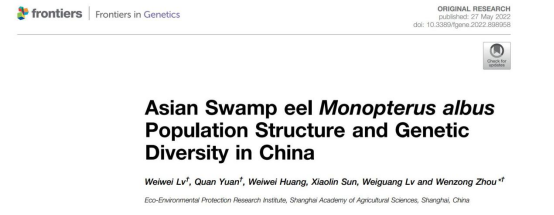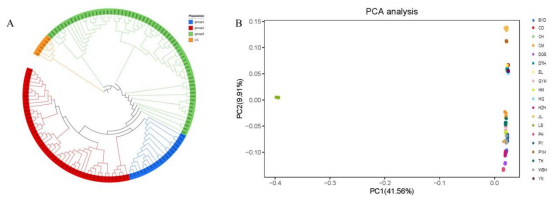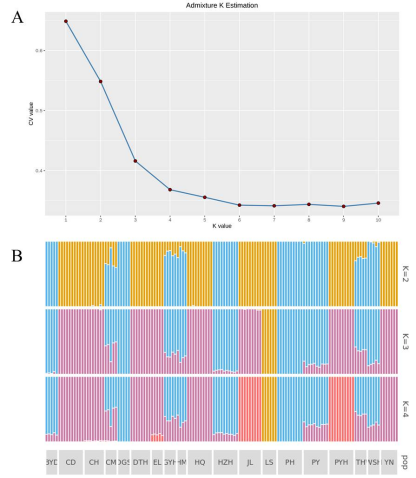Eco-environmental Protection Research Institute Achieved Important Progresses in the Study of Asian Swamp Eel Population Structure and Genetic Diversity
The Aquatic Biology Research team from Eco-environmental Protection Research Institute of SAAS made significant advances in the study of Asian swamp eel (Monopterus albus) population structure and genetic diversity after six years of research. The results provide scientific theoretical supports for the protection of germplasm resources and artificial breeding of M. albus.

M. albus is one of the most popular aquatic products in China. The research team identified the single nucleotide polymorphisms (SNPs) of M. albus from 19 wild populations in China using restriction-site associated DNA sequencing (RAD-seq), and used SNP markers to investigate the genetic diversity and population genetic structure of swamp eel. A total of 8941794 SNPs were identified. Phylogenetic and principal component analysis suggested that the 19 populations were clustered into four groups: the Jiaoling County (JL) and Poyang Lake (PYH) populations in Group Ⅰ; the Chengdu City (CD), Dali City (YN), Eli Village (EL), Dongting Lake (DTH), Huoqiu County (HQ), and Chaohu Lake (CH) populations in Group Ⅱ; the Puyang City (PY), Chongming Island (CM), Tai Lake (TH), Gaoyou Lake (GYH), Weishan Lake (WSH), Haimen City (HM), Hongze Lake (HZH), Baiyangdian Lake (BYD), Dagushan (DGS), and Pinghu City (PH) populations in group Ⅲ; and the Lingshui County (LS) populations in Group Ⅳ. All 19 populations may have evolved from four ancestors. The genetic diversity was relatively high in CM, GYH, and HM; and low in LS, EL, and JL. The LS and CM populations had the highest and lowest differentiation from the other populations, respectively. These findings provide new insights for germplasm resources protection and artificial breeding of M. albus.


The results were published in Frontiers in genetics (IF 4.599)(doi: 10.3389/fgene.2022.898958). Dr. Weiwei Lv and Dr. Quan Yuan were the first authors of the paper and Prof. Wenzong Zhou was the corresponding author. The research was supported by the Shanghai Municipal Agricultural and Rural Affairs Commission and the China Agriculture Research System of MOF and MARA.
(posted by Dr. Weiwei Lv from Eco-Environmental Protection Research Institute)

用户登录